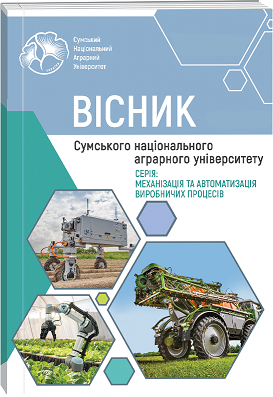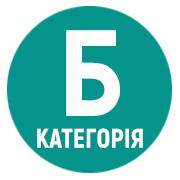THE INFLUENCE OF GEOMETRICAL AND MODE PARAMETERS ON THE EFFICIENCY OF THE WORKING NOZZLE OF THE PNEUMATIC ABRASIVE EJECTOR UNIT
Abstract
The pneumatic abrasive unit has become widespread in a number of technological operations for processing surfaces of any form and contamination. The abrasive blasting method has been used for a long time due to its simplicity and efficiency. A large amount of compressed air is required for the operation of a pneumatic abrasive installation. Such installations are performed as a source of a compressed air compressor with a consumption of 0.35-5.25 cubic meters per minute, work that requires electricity consumption of the order of 25-40 kW. The main element of the air-abrasive installation, which affects the efficiency of its work and the amount of electricity consumption, is the working nozzle. Thus, the development of a more efficient design of the working nozzle in comparison with existing analogues will lead to a reduction in the consumption of expensive air and material processing time. With the help of a numerical study using the ANSYS CFX 9 R1 complex, it was established that with an increase in the mass flow of sand, the mass flow of air decreases, which is due to the throughput of the nozzle itself. It was found that when the gas velocity decreases after a pressure jump, the velocity of sand grains does not decrease, but it almost does not increase either. It was also established that as the value of the pressure in front of the nozzle increases, the value of the speed of the grains of sand at the exit from the nozzle increases. As the diameter of the grains of sand decreases, the value of their speed increases at the same pressure and sand consumption. The influence of the length of the diffuser part of the nozzle on the value of the velocity of the particles of the dispersed phase was studied. It was established that with an increase in the diffuser length of the nozzle, the value of the speed of sand grains increases almost three times in comparison with an industrial nozzle, which causes an increase in contact stresses on the processing surface from the impact of sand. The greater the value of the contact stresses, the more efficient the nozzle. The expediency of increasing the length of the diffuser part of the venturi nozzle compared to the industrial nozzle UDC32-450 has been experimentally confirmed. Thus, the processing time of a square meter of material with the length of the diffuser part of the nozzle l=300 mm decreased by 4 times.
References
2. Baha V., Pavlenko I., Židek K., Ciszak O. (2024). Ensuring the Abrasive Jet Machining Efficiency Using a Nozzle with a Perforated Insert. Machines 2024. Article. Basel: Switzerland. 12(5), 347. https://doi.org/10.3390/ machines 12050347.
3. Baha, V.; Mižáková, J.; Pavlenko, I. (2023). An Increase in the Energy Efficiency of Abrasive Jet Equipment Based on the Rational Choice of Nozzle Geometry. Energies , by the authors. Licensee MDPI, Article. Basel, Switzerland. 16, 6196. https://doi.org/ 10.3390/en16176196. © This article is an open access article distributed under the terms and conditions of the Creative Commons Attribution (CC BY) license (https://creativecommons.org/licenses/by/ 4.0/).
4. Bañon, F.; Sambruno, A.; Batista, M.; Simonet, B.; Salguero, J. Surface. (2020). Quality and free energy evaluation of S275 steel by shot blasting, abrasive water jet texturing and laser surface texturing. Metals, 10(2), 290. DOI: 10.3390/met10020290
5. Bondarenko, G.; Baga, V.; Bashlak, I. (2014). Flow simulation in a labyrinth seal. Applied Mechanics and Materials 630, 234–239. DOI: 10.4028/www.scientific.net/AMM.630.234
6. Bondarenko, G.; Vanyeyev, S.; Baga, V.; Rodymchenko, T.; Bashlak, I. (2019). Increase of Efficiency of Turbine Setting Based on Study of Internal Flows. In: Ivanov, V., et al. Advances in Design, Simulation and Manufacturing. DSMIE 2018. Lecture Notes in Mechanical Engineering. Springer, Cham, pp. 237–246. DOI: 10.1007/978-3-319-93587-4_25
7. Fesenko, A.; Yevsiukova, F.; Basova, Y.; Ivanova, M.; Ivanov, V. (2018). Prospects of using hydrodynamic cavitation for enhancement of efficiency of fluid working medium preparation technologies. Periodica Polytechnica Mechanical Engineering 62(4), 269–276. DOI: 10.3311/PPme.11877
8. Han, X.; Xiao, J.; Yu, F.; Zhao, W. (2022). Relationships and mechanisms of sand grain promotion on nozzle cavitation flow evolution. A numerical simulation investigation. Journal of Thermal Science 31(6), 2385–2410. DOI: 10.1007/s11630-022-1568-y
9. Hao, X.; Yan, J.; Gao, N.; Volovyk, O.; Zhou, Y.; Chen, G. (2023). Experimental investigation of an improved ejector with optimal flow profile. Case Studies in Thermal Engineering 47, 103089. DOI: 10.1016/j.csite.2023.103089
10. Jianxin, D. (2005). Erosion wear of boron carbide ceramic nozzles by abrasive air-jets. Materials Science and Engineering: A, 408(1–2), 227–233. DOI: 10.1016/j.msea.2005.07.029
11. Jianxin, D.; Sun, J. (2008). Sand erosion performance of B 4 C based ceramic nozzles. International Journal of Refractory Metals and Hard Materials 26(3), 128–134. DOI: 10.1016/j.ijrmhm.2007.06.001
12. Kartal, V.; Emiroglu, M.E. (2023). Effect of nozzle type on local scour in water jets: An experimental study. Ocean Engineering, 277, 114323. DOI: 10.1016/j.oceaneng.2023.114323
13. Kondus, V., Pavlenko, I., Kulikov, O., & Liaposhchenko, O. (2023). Development of a High-Rotational Submersible Pump for Water Supply. Water: Article. Basel: Switzerland. 15(20), 3609. https://doi.org/10.3390/w15203609.
14. Korohodskyi V., Kryshtopa S., Migal V., Rogovyi A., Polivyanchuk A., Slyn’ko G., Manoylo V., Vasylenko O., Osetrov O. (2020). Determining the characteristics for the rational adjusting of an fuel-air mixture composition in a two-stroke engine with internal mixture formation. Article. P. 104.
15. Kosheleva, O.; Kreinovich, V. (1999). Error estimation for indirect measurements: interval computation problem is (slightly) harder than a similar probabilistic computational problem. Reliable Computing 5, 81–95. DOI: 10.1023/A:1026497709529
16. Kulikov, O., Ratushnyi, О., Moloshnyi, O., Ivchenko, O., & Pavlenko, I. (2022). Impact of the Closed, Semi-Opened, and Combined Contra-Rotating Stages on Volume Loss Characteristics. Journal of Engineering Sciences. Article. Sumy: Ukraine. 9(1), D6–D13. https://doi.org/10.21272/jes.2022.9(1).d2
17. Kwon, D.-K.; Lee, J.-H. (2022). Performance improvement of micro-abrasive jet blasting process for al 6061. Processes, 10(11), 2247. DOI: 10.3390/pr10112247
18. Li, A.; Chen, J.; Xi, G.; Huang, Z.(2023) Numerical investigation of the effect of primary nozzle geometries on flow structure and ejector performance for optimal design. Journal of Mechanical Science and Technology, Article. 37(5), 2139–2148. DOI:10.1007/s12206-023-2101-2
19. Lishchenko, N., Vanyeyev, S., Mižáková, J., Rodymchenko, T., Pitel’, J. J. (2022). Numerical Simulation of Gas Flow Passing through Slots of Various Shapes in Labyrinth Seals. Article. Basel: Energies (in Switzerland). 15 (9), 2971 DOI:10.3390/en15092971
20. Pavlenko, I., Ciszak, O., Kondus, V., Ratushnyi, O., Ivchenko, O., Kolisnichenko, E., Kulikov, O., & Ivanov, V. (2023). An Increase in the Energy Efficiency of a New Design of Pumps for Nuclear Power Plants. Energies. Article. Basel: Switzerland. 16(6), 2929. https://doi.org/10.3390/en16062929
21. Povstyanoi, O.Y.; Sychuk, V.A.; McMillan, A.; Rud’, V.D.; Zabolotnyi, O.V. (2015). Metallographic analysis and microstructural image processing of sandblasting nozzles produced by powder metallurgy methods. Powder Metallurgy and Metal Ceramics 54(3-4), 234–240. DOI: 10.1007/s11106-015-9705-8
22. Rogovyi A., Khovanskyy S., Grechka I., Pitel J..(2020). The wall erosion in a vortex chamber supercharger due to pumping abrasive mediums. Advances in Design, Simulation and Manufacturing II: Article. Proceedings of the 2nd International Conference on Design, Simulation, Manufacturing: The Innovation Exchange, DSMIE-2019Lutsk, Ukraine. 682-691.
23. Rogovyi, S Khovanskyi, I Hrechka, A Gaydamaka. (2020) Studies of the swirling submerged flow through a confuser. A. Design, Simulation, Manufacturing: The Innovation Exchange, Article. p. 85-94.
24. Somov, D.; Zabolotnyi, O.; Polinkevich, R.; Valetskyi, B.; Sychuk, V. (2020). Experimental Vibrating Complex for the Research of Pressing Processes of Powder Materials. In: Ivanov, V., et al. Advances in Design, Simulation and Manufacturing II. DSMIE Lecture Notes in Mechanical Engineering. Springer, Cham, pp. 321–329. DOI: 10.1007/978-3-030-22365-6_32
25. Sychuk, V.; Zabolotnyi, O.; McMillan, A. (2015). Developing new design and investigating porous nozzles for abrasive jet machine. Powder Metallurgy and Metal Ceramics, 53(9-10), 600–605. DOI: 10.1007/s11106-015-9655-1
26. Sychuk, V.; Zabolotnyi, O.; Somov, D. (2018) Technology of Effective Abrasive Jet Machining of Parts Surfaces. In: Ivanov, V., et al. Advances in Design, Simulation and Manufacturing. DSMIE. Lecture Notes in Mechanical Engineering 2019. Springer, Cham, pp. 166–176. DOI: 10.1007/978-3-319-93587-4_18.
27. Vanyeyev S.М., Bondarenko G. A., Baha V., Bashlak I. A., Rodymchenko T. S. (2018) Influence of Gas Physical Properties on Labyrinth Seals Throttling Characteristics. Problems of the regional energetics. Article. Chişinău, Institutul de Energetica: Moldova. 3 (38), 83-92.
28. Xi, X.; Xin, Y.; Duan, D.; Zhang, B. (2023). Experimental investigation on the performance of a novel resonance-assisted ejector under low pressurization. Energy Conversion and Management 280, 116778. DOI: 10.1016/j.enconman.2023.116778
29. Zabolotnyi, O.; Povstyanoy, O.; Somov, D.; Sychuk, V.; Svirzhevskyi, K. (2019). Technology of Obtaining Long-Length Powder Permeable Materials with Uniform Density Distributions. In: Beltran Jr., A., Lontoc, Z., Conde, B., Serfa Juan, R., Dizon, J., Springer, Cham.
30. Zabolotnyi, O.; Sychuk, V.; Somov, D. (2019). Obtaining of Porous Powder Materials by Radial Pressing Method. In: Ivanov, V., et al. Advances in Design, Simulation and Manufacturing. DSMIE. Lecture Notes in Mechanical Engineering. Springer.

 ISSN
ISSN  ISSN
ISSN 



